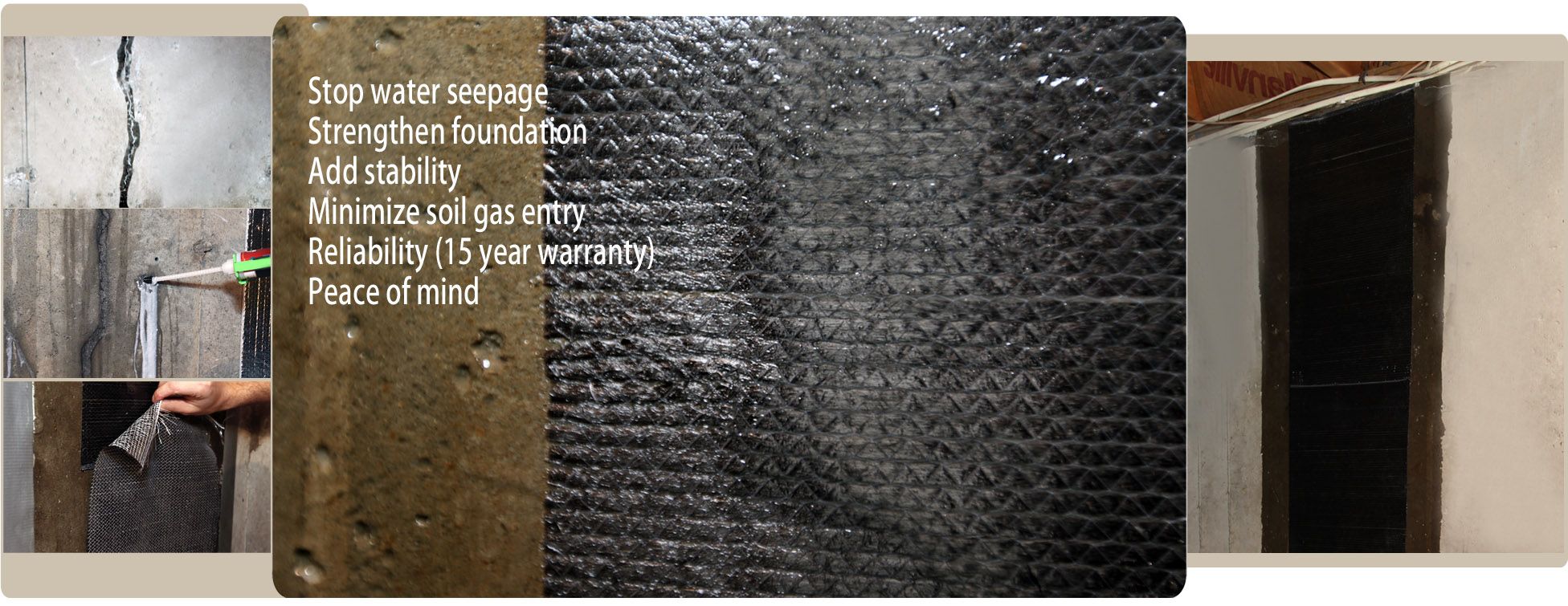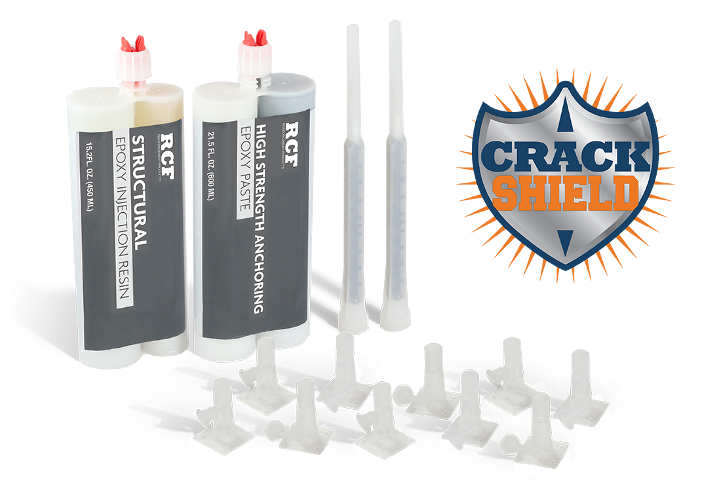CrackShield
Product Specs and Installation Guidelines
CrackShieldTM
The CrackShield System combines traditional injection methods, polyfoam and/or epoxy, with the strength of carbon fiber to give you the most complete repair possible.
There was a study that showed that most injection repairs started to have issues due to movement. Polyfoams are great at filling gaps and sealing cracks, but they aren't very resistant to movement. Epoxies are fantastic at restoring the crack to the same strength and hardness, all while sealing, but they don't do well when the crack tries to re-open or move.
CrackShield was made to help cure that issue. Using the stronger than concrete carbon fiber material to help to strengthen the areas around that crack will give the repair the best chance of not moving. That preserves the injection material and keeps it where it needs to be, without worrying about movement possibly breaking the newly sealed repairs.
And as an added bonus the carbon fiber will add strength back to the wall to make it perform the way it was originally designed.
Cracks in the foundation are common.
But don't worry about that. We have professional contractors to help you out with your repairs, or you can take this on DIY.
The CrackShield System comes in two different configurations:
Polyfoam Injection - If you have an active water leak, or you have had water recently in the crack, we recommend polyfoam. The polyfoam that we use in the kit has had extensive work done on it to allow it to expand with or without the presence of water, so it will expand in the dry areas as well as in the wet areas inside the crack. No more turkey basters full of water to force the foam to kick off.
Epoxy Injection - If you don't have water in the crack, and it's dry inside the crack, then we always recommend epoxy injections. The injection material that we have chosen for this kit is harder than concrete and stronger in most ways, however it can sometimes have issues if there is water active in the crack area.
Carbon Fiber crack repair - Using a 12 inch wide piece of bidirectional carbon fiber to secure the crack against any further expansion is absolutely key to making sure that that crack doesn't leak again. The strength of the carbon fiber helps to prevent movement across the crack that could potentially compromise the repair, by tearing it open or fracturing around the injection. The carbon fiber holds that entire area together, giving it much needed strength to resist the crack from opening up again, as well as lending additional strength across the crack so that the wall itself is also able to perform as designed.





